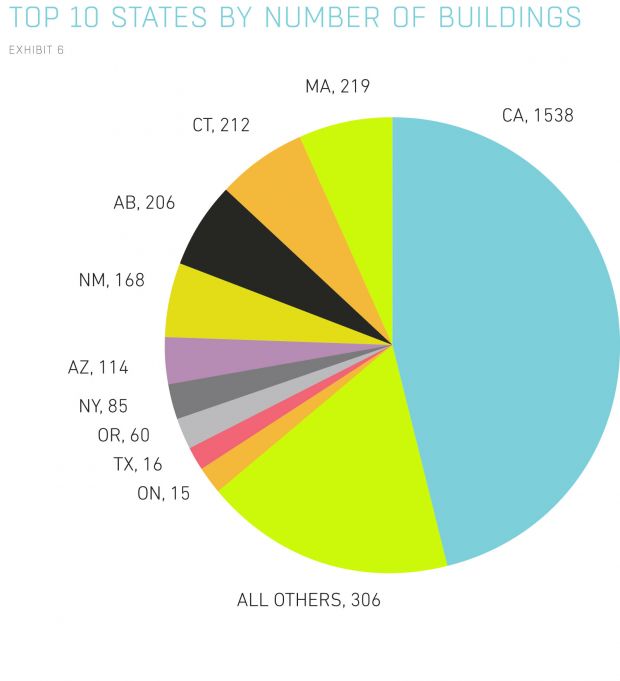California is home to more than half of all the net-zero buildings in the U.S., according to a new survey from the Net-Zero Energy Coalition. The survey is the first effort to catalog all of the zero-energy buildings in North America.
California announced last year that it wants to create a self-sustaining market allowing all new homes to be net zero by 2020. The state has been chipping away at market barriers for zero-energy buildings for nearly a decade.
Zero-net-energy buildings produce as much energy as they consume, usually through a mix of high efficiency and clean onsite generation. The definition requires that a home create as much energy as it uses over the course of an entire year, rather than on a real-time basis.
Across the U.S., there are nearly 6,800 net-zero housing units (including apartments and single-family homes) across 3,339 buildings. The coalition defines zero energy buildings as those that produce as much renewable energy as they consume, or could do so with slight modifications.

Source: Net-Zero Energy Coalition
Davis, Calif. is second to Sacramento, which leads with more than 925 zero-energy housing units and with 800 more planned. Davis has slightly fewer than 900 zero-energy homes. California has long been on the forefront of energy-efficiency standards, and much of the state has a relatively mild climate, making it a natural leader for the next step -- to make new buildings energy-neutral. Massachusetts has also invested in zero-energy building feasibility studies.
The absolute figures are small overall; the total number of net-zero housing units is equal to about 1 percent of 2014 housing starts. Another issue is that most of the net-zero buildings are new construction, yet at least half of the buildings that will be in use in 2050 have already been built. New legislation regarding zero-energy buildings will also have to come with more stringent rules for the existing building stock, as California has done with its proposal to double energy efficiency in existing buildings.
Despite the challenges, supporters of zero-energy buildings see momentum increasing.
“The numbers show major movement toward zero beyond current expectations, which should enable the market to see the feasibility of zero-energy residential buildings from a financial, technical and market perspective,” Shilpa Sankaran, Net-Zero Energy Coalition’s executive director, said in a statement. The coalition expects net-zero buildings to grow sixfold by 2017.
Most of the net-zero buildings are homes, and the majority of those are defined as “zero-energy ready.” Renewables are not necessarily supplying nearly all of the annual energy demand, but they could, the survey finds. In California, for instance, the state’s action plan calls for homes to be zero-energy ready, rather than actually being energy-neutral.
Although there are efforts across the U.S. to grow this sector, it will likely be California’s work that will push it into the mainstream. The state is pulling together stakeholders from across the building spectrum to work on issues such as reducing a home’s plug load, correctly valuing a zero-energy home, and identifying what the value of such homes may be to a utility.
In the next phase of research, the Net-Zero Energy Coalition will be conducting detailed case studies for a public online database to develop best practices in the burgeoning industry.



